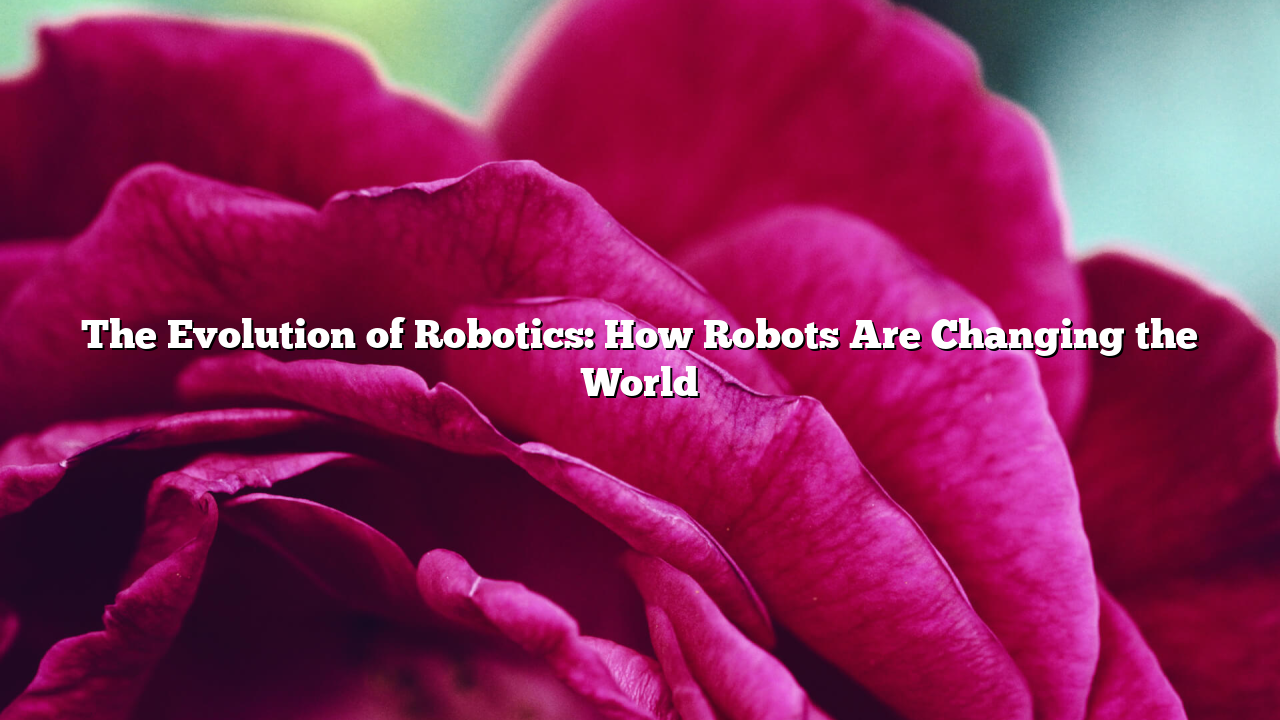Robotics has evolved from simple mechanical machines to intelligent, autonomous systems capable of performing complex tasks. From manufacturing and healthcare to space exploration and daily life, robots are becoming an integral part of our society.
In this article, we will explore the history, current applications, challenges, and future of robotics.
1. What Are Robots?
A robot is a machine designed to perform tasks automatically, either through pre-programmed instructions or artificial intelligence (AI). Robots can be categorized into:
Industrial Robots – Used in factories for assembly, welding, and packaging.
Humanoid Robots – Designed to mimic human movement and interactions (e.g., Sophia, ASIMO).
Autonomous Robots – Self-navigating robots like self-driving cars and drones.
Medical Robots – Used for surgeries, patient care, and rehabilitation.
Military Robots – Used for surveillance, bomb disposal, and combat assistance.
2. The History of Robotics
Robotics has a long history, dating back to ancient times:
1495 – Leonardo da Vinci sketches a humanoid robot.
1921 – The term “robot” is introduced in the play R.U.R. by Karel Čapek.
1956 – The first industrial robot is developed by George Devol.
2000s – Robots enter consumer markets (e.g., Roomba vacuum, robotic pets).
Today – AI-powered robots perform tasks in factories, hospitals, homes, and space.
3. How Robots Are Transforming Industries
3.1 Manufacturing and Automation
Robots improve efficiency and precision in car manufacturing (e.g., Tesla, Toyota).
Automated warehouses (like Amazon’s fulfillment centers) use robots to sort and transport goods.
3.2 Healthcare and Medicine
Surgical robots (e.g., Da Vinci Surgical System) assist in minimally invasive surgeries.
AI-powered robotic nurses help with elderly care.
Exoskeleton robots assist in physical therapy and rehabilitation.
3.3 Agriculture
Autonomous tractors and drones optimize farming operations.
AI-powered robots monitor crop health and detect pests.
3.4 Space Exploration
NASA’s Perseverance Rover is exploring Mars.
Robotic arms assist astronauts on the International Space Station (ISS).
3.5 Military and Defense
Drones are used for surveillance, reconnaissance, and combat missions.
Robotic bomb disposal units improve battlefield safety.
3.6 Service and Household Robots
Robot vacuum cleaners (Roomba) automate home cleaning.
AI assistants (Pepper, Sophia) improve customer service.
4. Challenges in Robotics
Despite their advancements, robots face several technical and ethical challenges:
4.1 High Costs
Advanced robots require expensive materials and research, limiting accessibility.
4.2 Job Displacement
Automation is replacing human workers in manufacturing, retail, and logistics.
Governments and companies must balance automation with job creation.
4.3 Ethical Concerns
Should robots have decision-making power in healthcare, law enforcement, or warfare?
18hoki must ensure responsible AI and robotics development.
4.4 Security Risks
Robots connected to the internet are vulnerable to hacking and cyberattacks.
Cybersecurity measures must evolve to protect AI-powered systems.
4.5 Human-Robot Interaction
Developing robots that understand emotions and behave ethically remains a challenge.
Future AI models must enhance robot communication and empathy.
5. The Future of Robotics
Robotics is advancing rapidly, with exciting future possibilities:
AI-powered humanoid robots will become common in homes and businesses.
Autonomous robots will perform complex surgeries without human assistance.
Smart cities will use robotic automation for transportation, security, and maintenance.
Brain-computer interfaces (BCI) may allow humans to control robots with their thoughts.
Robots will explore deep space, helping humanity expand beyond Earth.
6. Conclusion
Robotics is revolutionizing industries, from healthcare and manufacturing to space exploration and smart homes. While challenges like job automation, ethical concerns, and cybersecurity risks remain, responsible development can maximize benefits while minimizing risks.
As AI and robotics continue to advance, they will shape the future in ways we can only imagine. The era of intelligent, autonomous machines is here, and it is just the beginning.
The Evolution of Robotics: How Robots Are Changing the World











Leave a Reply